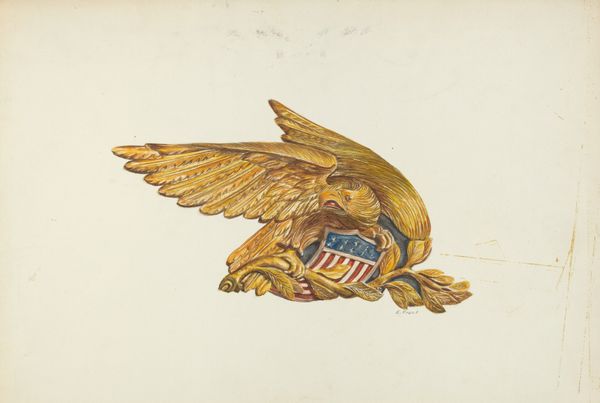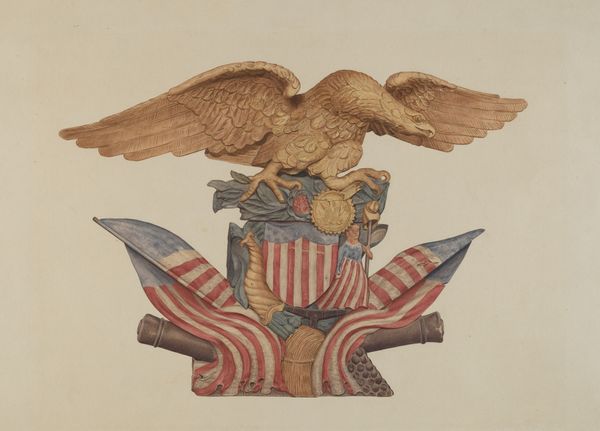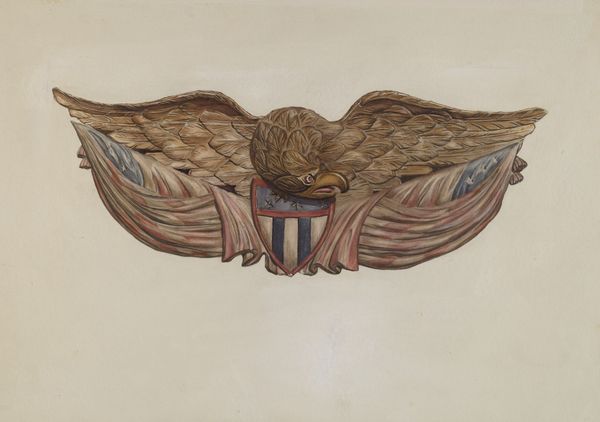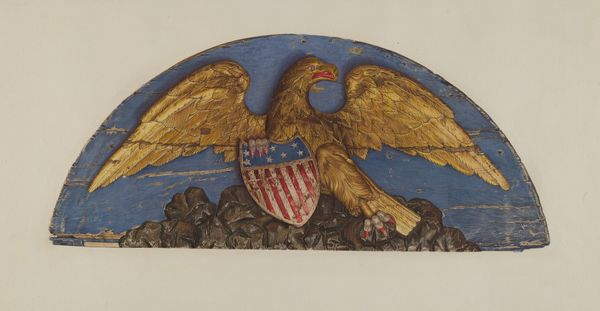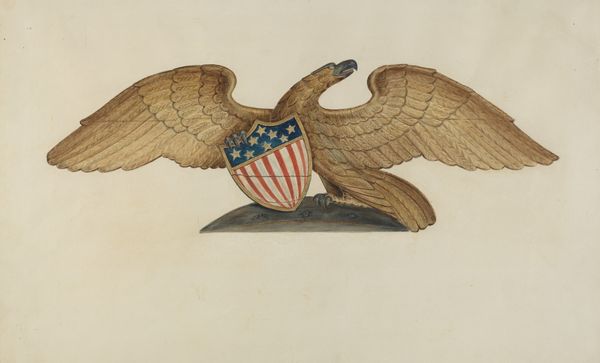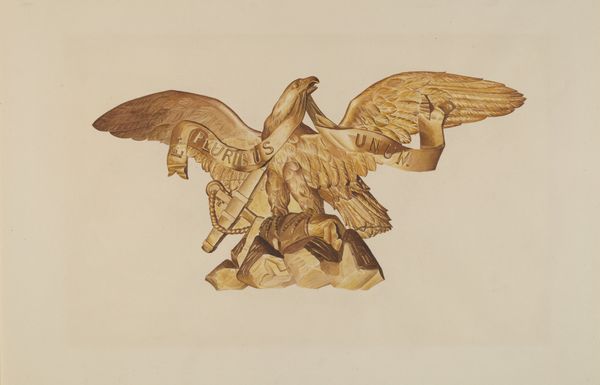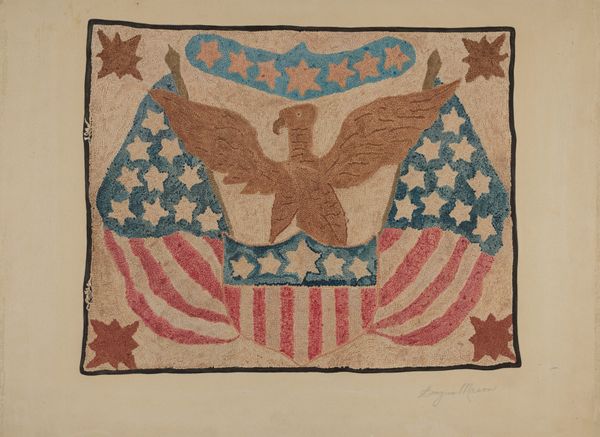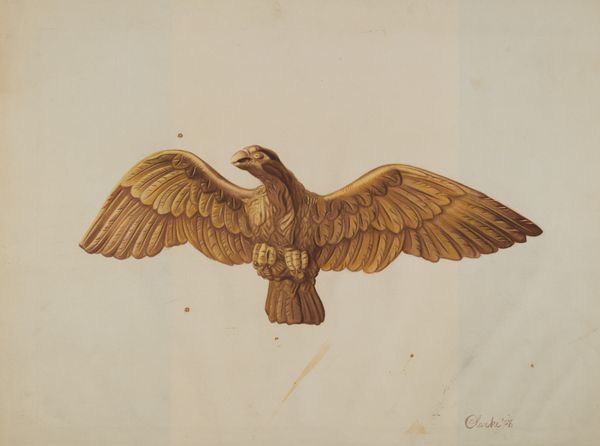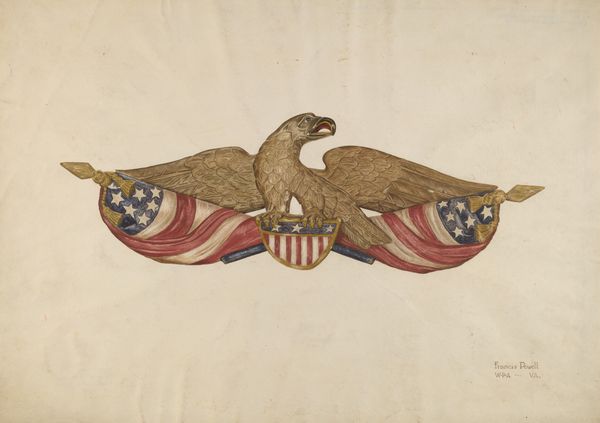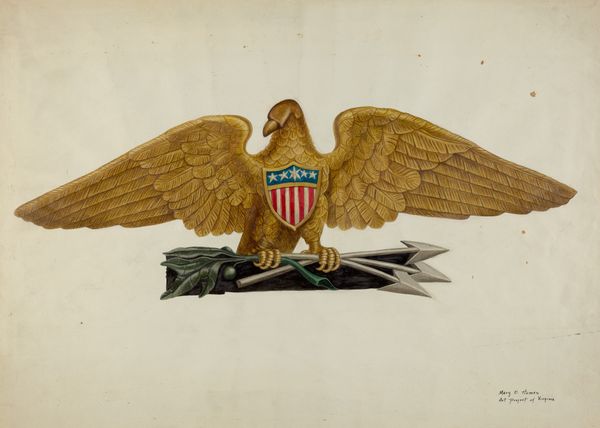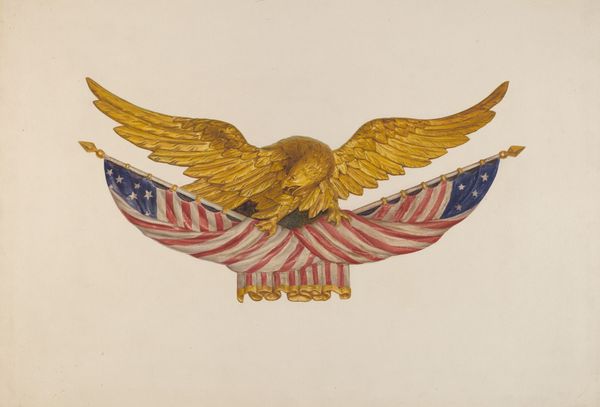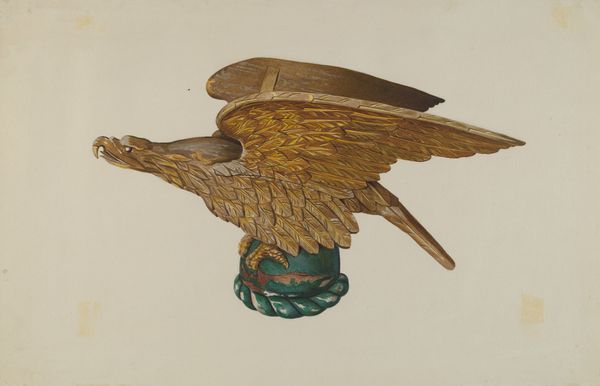
drawing, coloured-pencil, watercolor
#
portrait
#
drawing
#
coloured-pencil
#
caricature
#
watercolor
#
coloured pencil
#
watercolour illustration
Dimensions: overall: 36.5 x 51 cm (14 3/8 x 20 1/16 in.) Original IAD Object: 54" wide
Copyright: National Gallery of Art: CC0 1.0
Curator: Before us is Mary E. Humes’ “Stern Board,” circa 1940, rendered in watercolor and colored pencil. A striking image! Editor: My immediate thought is of craft; there's something grounding about its handmade feel, even with such an iconic symbol. Curator: Absolutely. Considering the era, it reflects a time when American identity was being consciously shaped, especially during and after the Great Depression and on the eve of World War II. Editor: It certainly seems part of that period. What kind of material context can you tell me about its production? Were materials readily available? Did this contribute to any artistic choices? Curator: Good question. Humes was part of the Art Project of Virginia. Remembering the context of the WPA initiatives during the New Deal offers critical insight into art’s role as cultural sustenance for the working class and art’s purpose in wartime production efforts. The iconographical presence of the American eagle, of course, is hardly a coincidence either. Editor: So this wasn't some individual, isolated artistic act, but state-sponsored artwork. That colors my understanding immensely! I imagine access to materials and studio space influenced Humes' choices regarding media, and watercolor and colored pencils being more economical choices for that period. The lines are so neat too. Do you know anything about her process? Curator: I believe that her hand-applied methodology, a traditional, almost folk-art like style, lends it both charm and lends additional meaning to how ideas are literally produced through craft. Also important is where this may have resided after its production in terms of a local municipal, federal or military location? The circulation of objects made for state needs adds dimensions about reception history we should not forget. Editor: And knowing it was most likely made during a moment of state and wartime urgency really reframes it. It makes me consider the value of production during times of both crises and cultural shifts and invites reflections about how these artmaking materials also had real impacts on makers in society during this time period. Curator: Precisely. "Stern Board" isn't merely a static representation, it’s an artifact of a nation wrestling with its identity and place on the world stage. Its impact goes well beyond just a symbolic emblem. Editor: A powerful convergence of labor, materiality, and national identity. It's changed my view from initial aesthetic admiration to something much more historically grounded. Curator: As it should! Seeing art as part of these materialist narratives and social formations enriches the entire field.
Comments
No comments
Be the first to comment and join the conversation on the ultimate creative platform.
